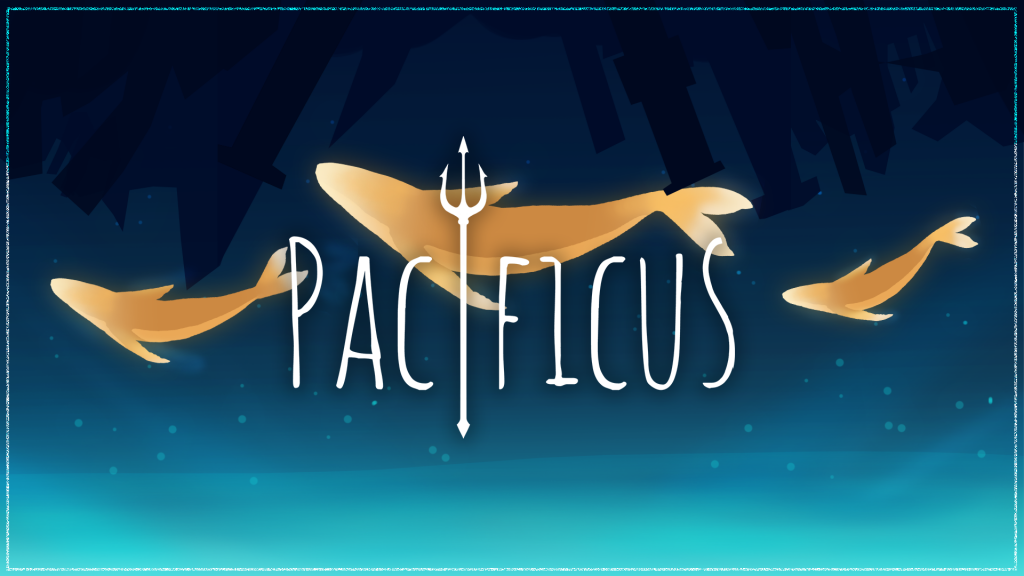
ABOUT THE PROJECT
Pacificus is a third person underwater platformer developed in two weeks at Futuregames.
We had the requirements to make a linear adventure game featuring puzzles in a nature setting that would ”break the mold”.
• Role: Product Owner, Game & UX Designer, Visual Scripting
• Project length: 2 weeks
• Engine: Unreal Engine 4
• Genre: Adventure Puzzle/Platformer
• Team size: 7 people
(4 designers and 3 artists)
CONTRIBUTIONS
GAME & UX DESIGN
• Core gameplay loop
• Player mechanics
• Environment and progression
PRODUCT OWNER
• Conceptualizing the team vision
• Keeping track of backlog
• Structuring deadlines and tasks
VISUAL SCRIPTING
• UI elements
• AI patrolling behavior
• Light caustics and wavy screen
GAME DESIGN
In Pacificus your goal is to restore order to the ocean that has been turned upside down.
By wielding a trident you have the power to possess sea creatures in order to solve ancient puzzles in this underwater adventure.
The core gameplay loop requires the player to continuously climb upwards toward the heart of the sea. The way there requires jumping from platforming to platform, and surfing on or possessing sea creatures to bridge the gaps where the platforms are scarce. Three ancient temples with puzzles stand in your way.
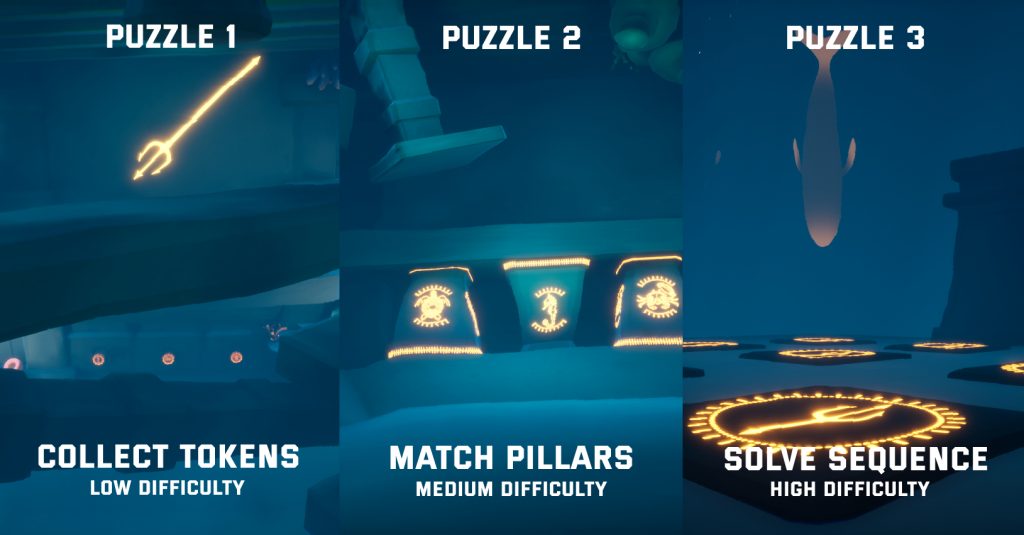
The first puzzle requires the player to collect three tokens that are scattered throughout the temple. In order to do so they need to pick up the trident and possess nearby manta rays to use as platforms. When the player brings the tokens to the door it will open.
The second puzzle requires the player to match the rotation of three pillars to the poses of statues on the sea floor. The player needs to possess jellyfish to swim around and inspect the statues until they find the right combination. Once all pillars are turned correctly the door opens.
The final puzzle requires the player to walk on pressure plates in the correct sequence. To reach the puzzle the player needs to possess whales and line up a bridge to cross over. Once the sequence is complete a podium, to place the trident on, will appear.
PLAYER MECHANICS
Since platforming was at the core of the gameplay experience we wanted to make sure the traversal was engaging and enjoyable. We also decided that the character should try to restore the ocean and therefore it would be inclined to not disturb it any further. A mystical submerged pacifist was born, with the ability to peacefully control the creatures of the sea to its advantage.
Walking & Jumping
To emphasize an underwater setting we needed to tweak the values of friction and gravity extensively. When jumping, the player gives off a strong initial burst that then carries them slowly down again – like buoyancy floating the character back towards the surface. The walk is slow, as if dragged through the water, and has circle undulations appearing as the feet hit the surface.
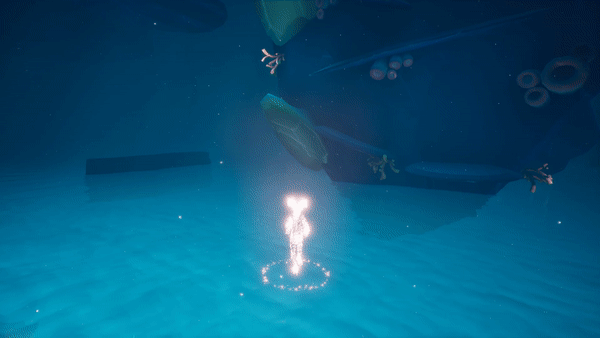
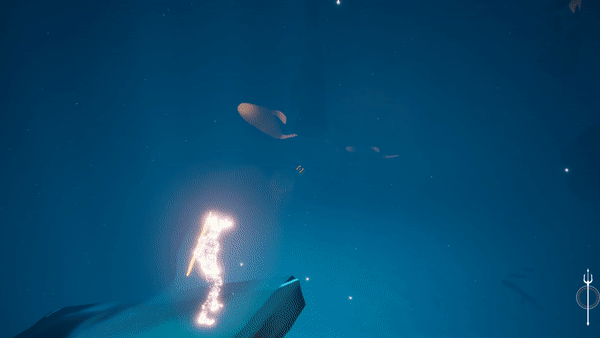
Possession
We decided to give the player the ability to possess sea creatures in order to add a level of complexity to the platforming. Possession allows the player to take control of any sea creature and move them freely. Releasing the control of a creature makes them remain in place for a duration, giving the player the possibility to use them as bridges between platforms. The creature then disappears and returns to its original location.
To balance this mechanic we made it only usable after the player has equipped the trident, and limited the player to only being able to control one creature at a time. If the player tries to possess a new creature while they already have one as a platform the stationary one will disappear directly, in order to prevent endless bridges.
UX DESIGN
A core requirement for the game was that it needed to ”break the mold”, so we decided the flip the ocean upside down. This daunting task that proved pivotal for the look and feel of the game’s environment, so the majority of the time spent on this project was designated towards the cinematography. We wanted the underwater atmosphere to be believable and enchanting, which required a lot of different elements to come together.
The Ocean – Upside Down
One of the most important aspects of our environment was the water, which needed to feel alive. To that end, we added floating particles around the player as well as both corals and fish that would act and move on their own. For more realistic water aesthetics we actually submerged the player, by taking Unreal Engine 4’s water system and inverting an ocean. This meant that we needed to construct the levels upside down – resulting in the base of the corals becoming platforms for the player to jump on. I also added a wavy screen effect to simulate the water’s natural movement.
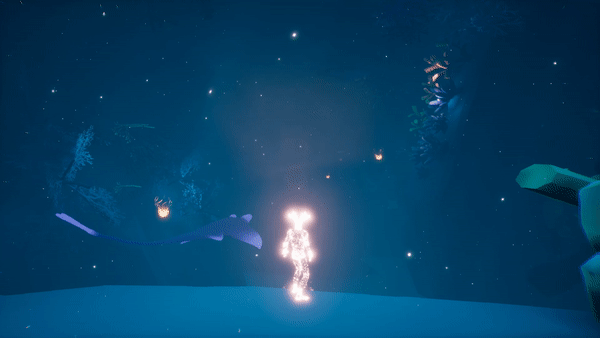
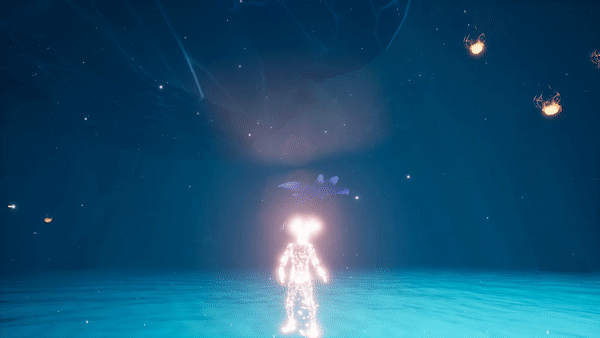
Lights & Illumination
The lighting was another factor that played an important role in the environment’s feeling. Since the ocean was upside down we placed the sun beneath the player, which created a gradient light that made the areas closer to the surface bright and the depths darker. Through the water’s surface we added god rays that moved together with the waves, as if the sun’s beams were shining stronger at the surface. To the main light source we also attached caustics to make it look as if the waves created reflective patterns of sunshine along the sea floor. As player guidance we placed jellyfish to light up a path with supposed bioluminescence. However, it was very dark in the depths so we made the character consist of shining particles that would always provide the player with light for their immediate surrounding.
Soundscape
The final piece of our environment’s puzzle was the audio. We wanted the player to enjoy the beauty of our environment, so we needed the soundscape to accomodate that enchanting emotion. Along the calm and mystical music I added an ambience of muffled water movements with soft bubbles floating through it. In the distance, the player can also hear the whales singing with each other. As the player reaches closer to the final puzzle they also reach closer to the whales and can hear the singing more clearly.
PROGRESSION
WHEN UP IS DOWN
The goal of Pacificus is to go deeper and deeper until you reach the heart of the ocean, where you return the trident to revert the ocean to its normal state. We wanted to give the player time to explore as they progress through the different areas, to obtain a sense of order in a disordely place. Since the game is set underwater we also wanted to incorporate the creatures of the sea into the experience for the player.
Introduction
We did not want to overwhelm the player at the start by throwing them head first into the deep end, so before they pick up the trident we give them a chance to familiarize themselves with only walking and jumping across the platforms. This section ends with the player surfing on the back of a manta ray towards the first temple. By letting the player ride along with the manta rays we aim to show how the sea creatures can be used to extend the player’s reach.
We positioned patrolling creatures around the first temple for the player to easily possess as they try to solve the first puzzle. To affirm that creatures could be used at platforms we wanted to introduce the player to flat and stable creatures first, and manta rays were the perfect candidates.
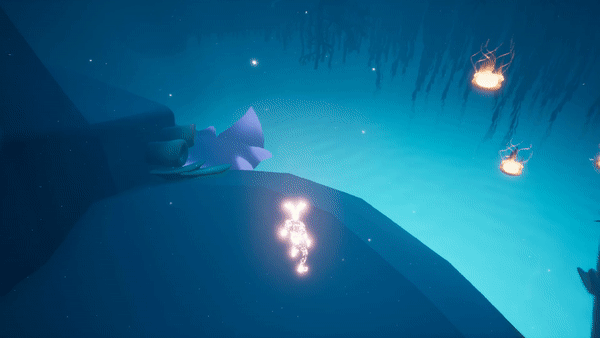
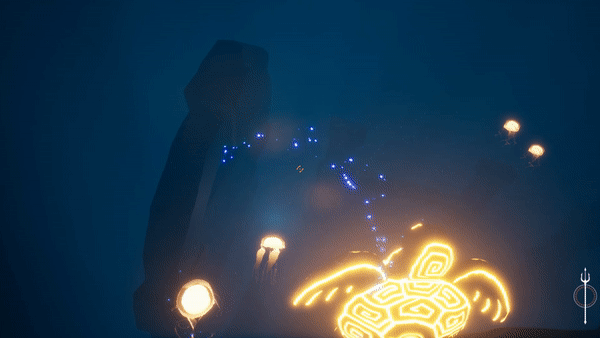
Exploration
After solving the puzzle in the first temple, a new area opens up for the player to explore. The passageways are quite narrow between the corals, but on the outskirts are jellyfish that roam freely. Here the player can possess the jellyfish and use them to discover the statues located around the area. The upcoming temple puzzle require the player to turn pillars to match the poses of the statues. The smaller jellyfish can turn in any direction and are a good fit traversing the tight corners.
Jellyfish are not used for platforming due to their rounder shapes, but we experimented with using them as launch pads. However, we decided against it since it offered unpredictable movement that went against the water’s flow.
Turning Point
The final area surrounding the heart of the ocean has big open spaces with long distances between the platforms. In order for the player to traverse these spaces we needed to provide large creatures for them to use as bridges. We went with whales that roamed long distances around the heart, but we also placed some sleeping whales convenienty within the player’s reach in close proximity to the edge of the final platform.
Once the player solves the final puzzle they can place the trident back at its pedestal, and finally turn the ocean back around.
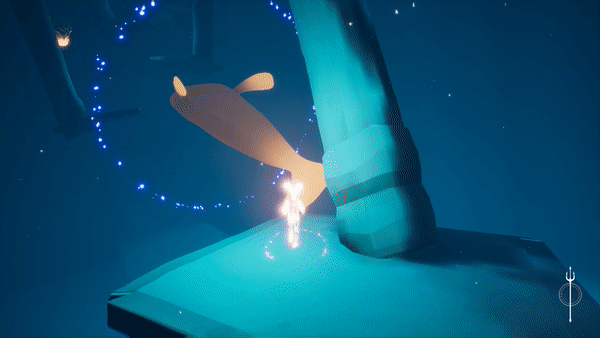
PRODUCT OWNER
As product owner I facilitated and conceptualized a vision for the team to follow as the guiding concept. During the process of the project I was the primary liaison that organized a design coherency between the different opinions of the team, as well as aiding all team members to make sure we followed the deadlines and worked towards the same goal.
I was able to structure the workflow by dividing and delegating the tasks in a kanban board on Miro, so that everyone could stay up to date with what had been done by the other members and what needed to be done going forwards.
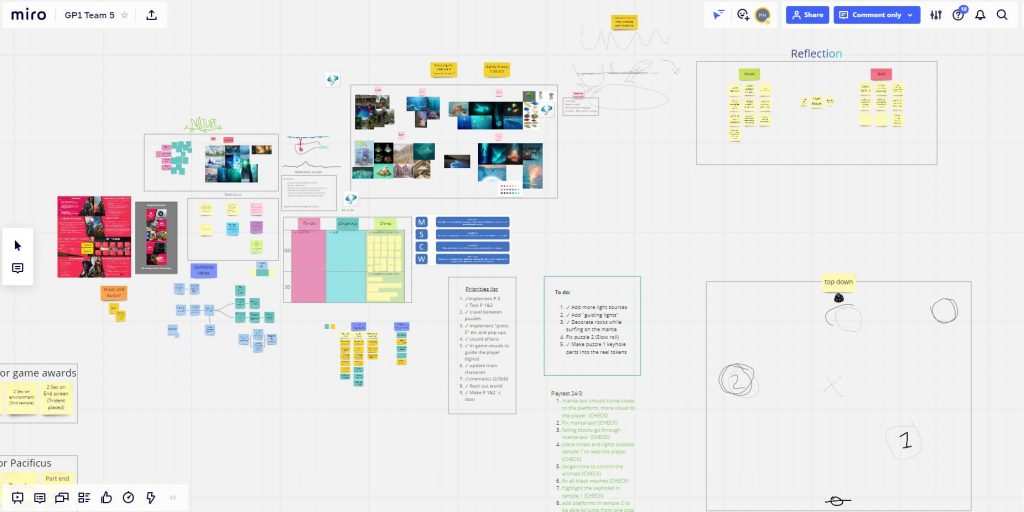
VISUAL SCRIPTING
I was responsible for many areas of the visual scripting for this project. Therefore, I made sure to keep my scripts well commented to provide clarity for the other designers. However, since this was my first collaborative game project I was required to follow and then adapt scripting tutorials in order to maintain effectiveness. The blueprints I then created included the UI elements, the animation blueprints, the AI patrol and a pair of screen effects.
UI Elements
We decided to keep the UI elements of the game minimalistic, as an effort to keep the player’s attention on the world around them. Widget pop-ups and collectibles were displayed on the screen only when interactions or numbers were required for puzzles to be completed. Additionally, I added a crosshair that appear when the player is aiming, to help them more accurately look for sea creatures in their surrounding to possess.
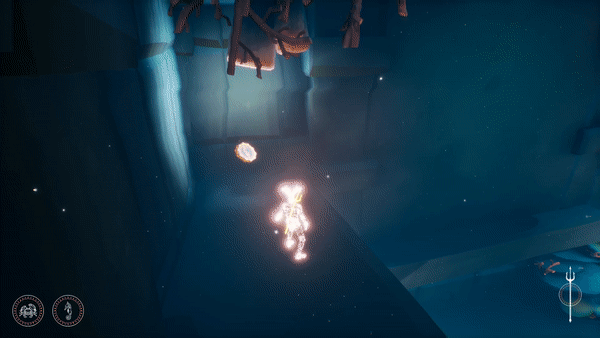
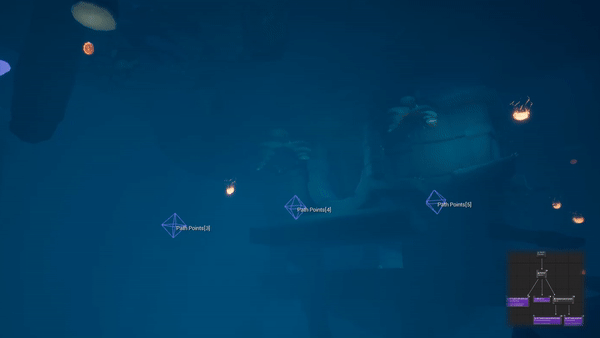
AI Patrol
A more significant system I made was the AI patrol. We wanted the creatures of the sea to feel like they were at home in the ocean so I set up a migratory pattern of behaviour. The AI follow several different paths of vector points in the world, that eventually loop around so that the ocean will always be populated. Since the creatures needed to fit into many areas I made their paths customizable, to accomodate the level design. To simulate that the AI were swimming I made invisible colliders that only affect the creatures, and placed vector points for them to slide along the different elevations.
Screen Effects
With hopes of making the environment feel more believable I added two visual elements that could facilitate an underwater setting; light caustics and a wavy post process screen effect. The light caustics produce a texture that is passed through a chaos filter which causes it’s movement. It then lands on all surfaces and actors in the scene and adds vibrancy to the sea floor. The wavy screen effect uses a slightly distorted normal map that pans as a blurry filter and resembles a flowing oceanic movement.
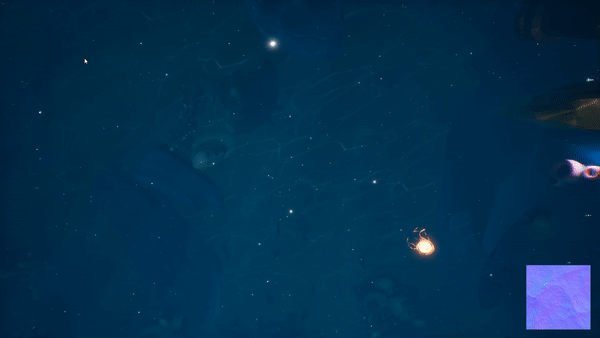
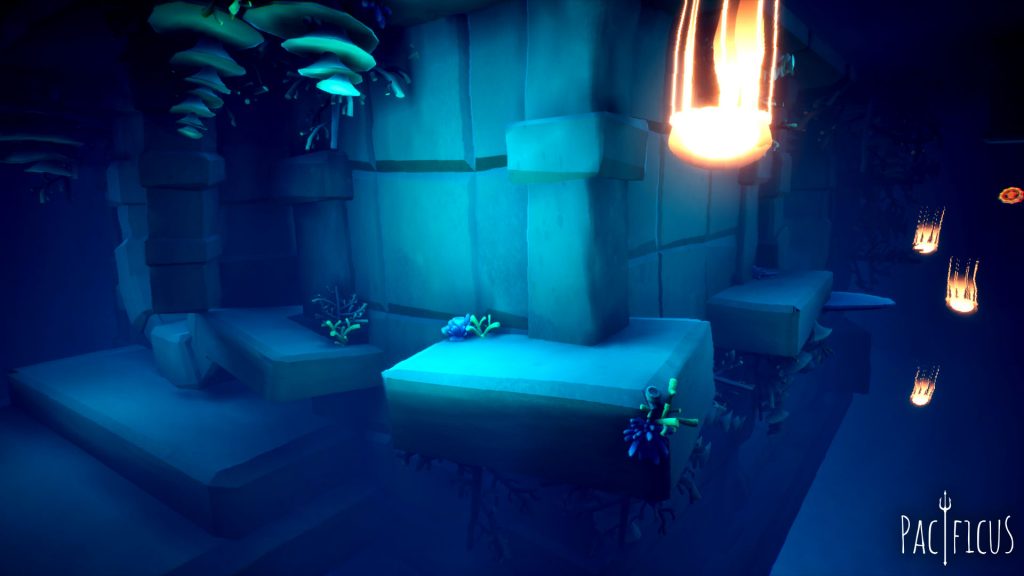
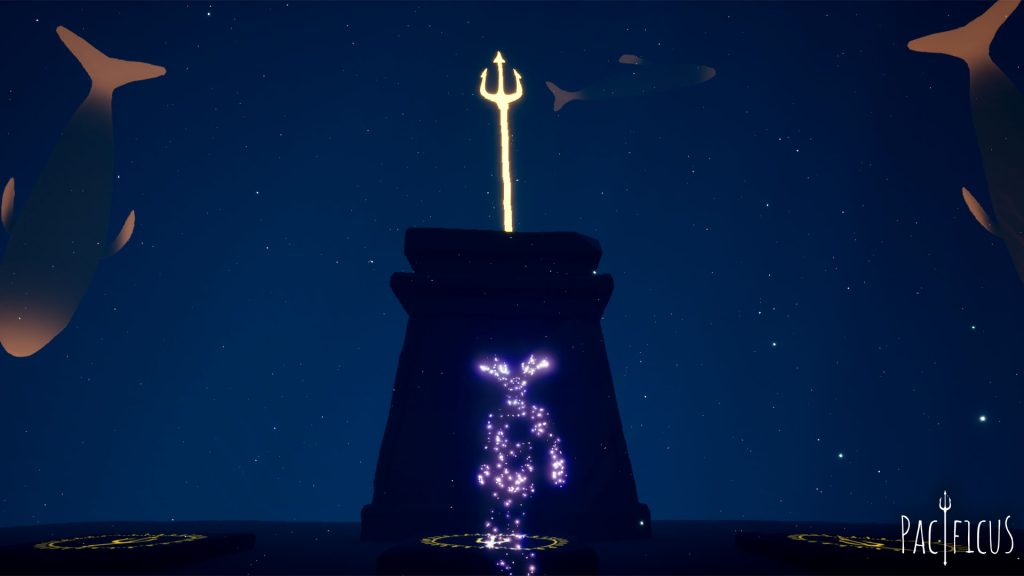
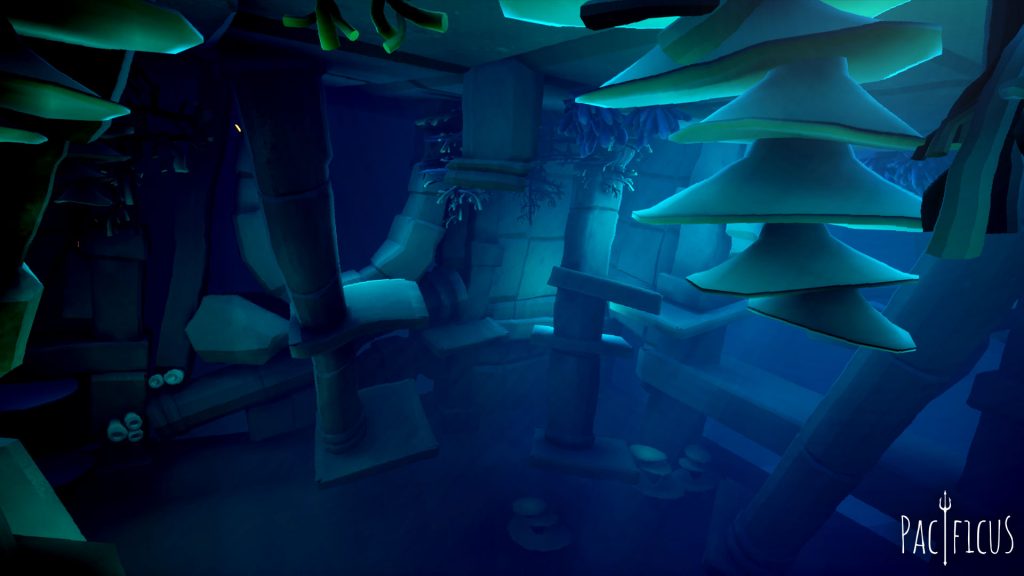
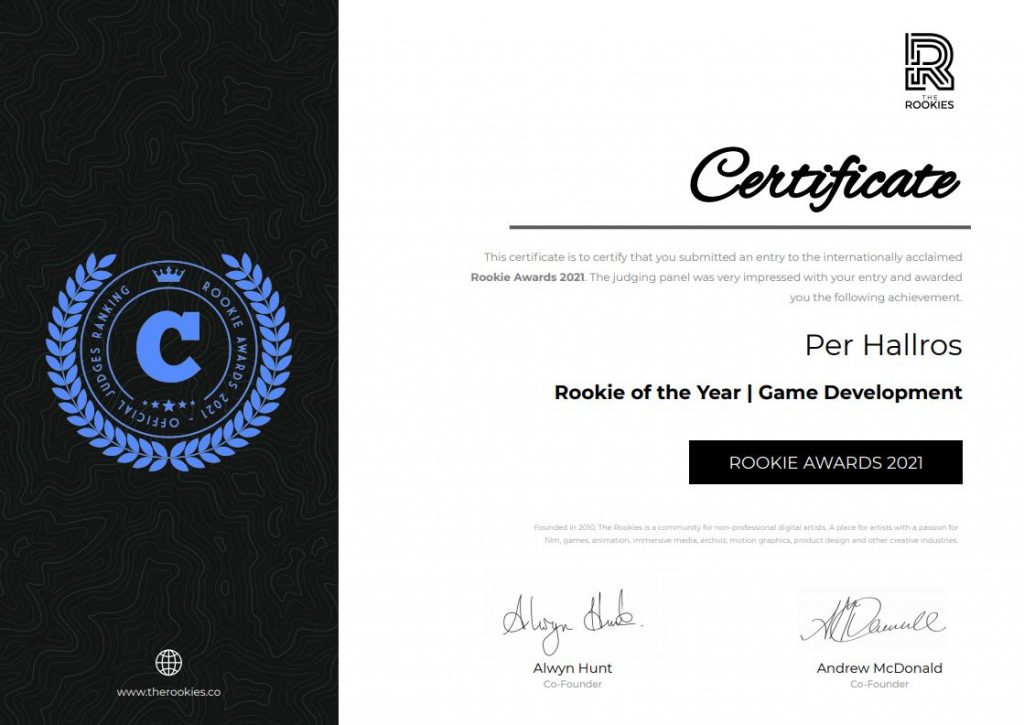
Pacificus was submitted to The Rookie Awards 2021 and received a certificate of development rank C.
CLOSING THOUGHTS
This was my first collaborative game project and it was a great eye opener to the world of game development, and I highly value the experiences I learned by working with people of different roles and skill sets. We were all quite new to using game engines as well but it was a fun challenge to overcome. However, it was a very exciting project to lead since ambitions remained high, even if I don’t think the gameplay turned out to be the most exciting. I nonetheless love the environment we were able to create and I am proud that we were able to do it in only two weeks.
TEAM MEMBERS
GAME DESIGNERS
• Per Hallros
• Benjamin Hallberg
• Niklas Pålsson
• Mikael Owlheart
3D ARTISTS
• Hugo Svedstam
• Lolo Lin
• Petra Aderlund
Thank you for reading about this project!

